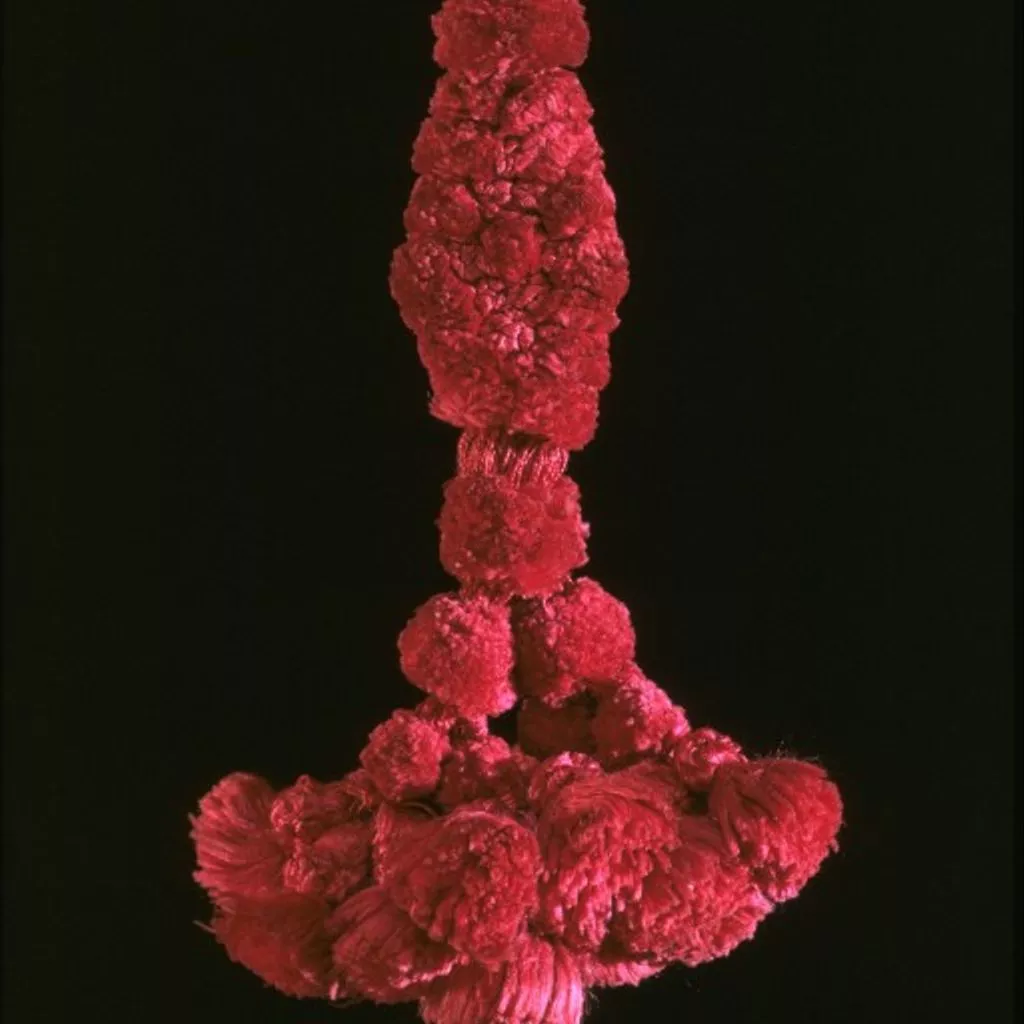Description
The ‘gandaya’ is a type of headwear originating in Catalonia and Valencia. It was usually worn at the back of the head, covering the wearer’s hair and gathered up around the bottom with a ribbon. Gandayas appear in inventories from the fourteenth century, although no examples survive from this period.
During the eighteenth century, Madrid attracted immigrants from other areas of Spain bringing with them regional dress, such as the gandaya. These newcomers were known as ‘majos’ and they used their distinctive dress to develop a unique identity, in contrast to the French fashions worn in Spain. Gandayas were characterized by a lavish hanging tassel, which swayed loosely, followed the movements of whoever wore it, and captivated everyone’s attention. They soon became the distinctive accessory the majos. Élite society in Madrid adopted majos’ fashions, which struck them as picturesque and patriotic. Replacing their fashionable French headwear with a gandaya became a subversive act and the dress of the female ‘majas’ was even banned for a short period of time in the 1780s. As gandayas were worn by both men and women, they challenged traditional gender roles and appearances.
The donor of the object, Pamela Sanguinetti, inherited this gandaya from her mother, Lady Pauline Peto, who probably acquired it in one of her trips to Spain.
A hair bonnet of red silk of circular hand knitting in a round shape, with a pattern of chevrons and lozenges. It has a long, hand-made tassel with a series of complex knots.
Hair bonnet, hand-knitted red silk, Spanish, 1750-1800.












